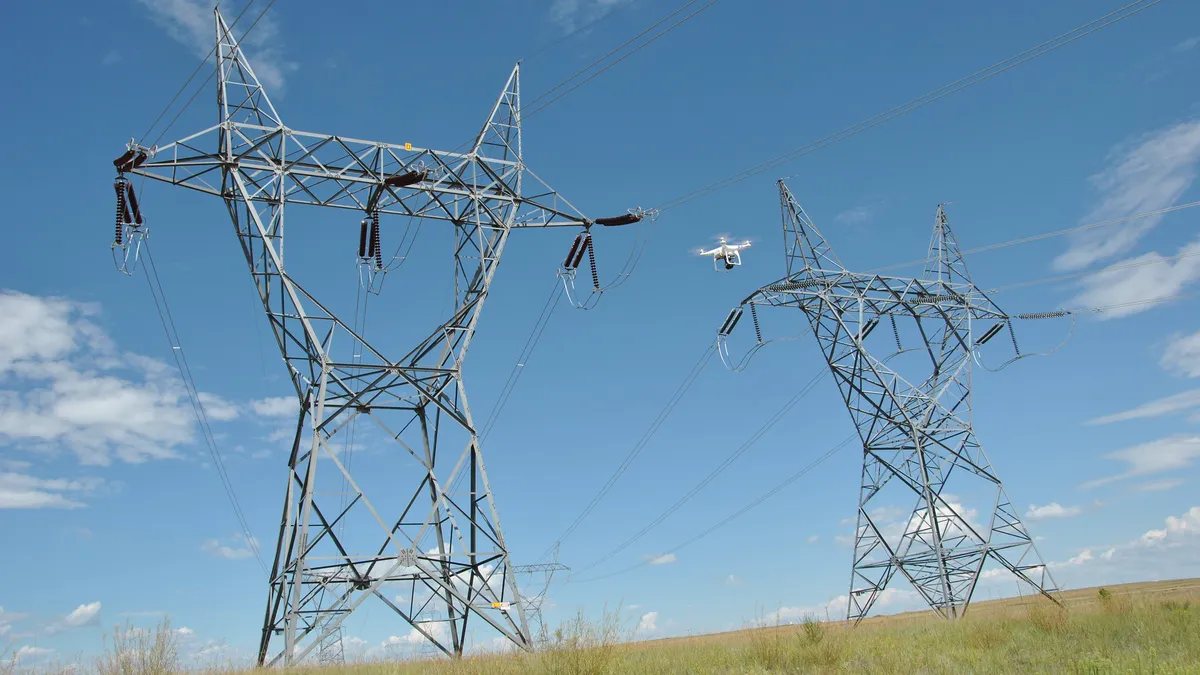Dive Brief:
-
Participating in a regional transmission organization (RTO) could save Colorado's utilities up to $230 million a year, or 5% of their costs, while helping meet the state's clean energy goals, according to a study released Wednesday by the Colorado Public Utilities Commission.
-
The PUC said it was in the public interest for the state's utilities to join some form of organized wholesale market, but warned RTOs can have governance-related and other drawbacks.
-
The report feeds into a surge of interest in developing an organized power market in the West and will likely be used by regulators in the region as they weigh their market options, according to participants in those discussions.
Dive Insight:
The report comes as states and utilities across the West are considering options for forming one or more organized power markets to help them reduce costs, meet their energy goals and improve grid reliability.
Utilities in Colorado and Nevada are required to join an organized wholesale market by 2030 while states like Arizona and Oregon are exploring the issue. The California Independent System Operator (CAISO) and the Southwest Power Pool (SPP) are developing potential day-ahead markets for Western utilities that would build on energy imbalance markets (EIM) that are used to balance real-time shifts in electric supply and demand.
In part, Colorado's interest in organized power markets is driven by its goal to cut carbon emissions from its generating fleet by 80% by the end of this decade and to eliminate such emissions by 2050.
The PUC's report echoes the findings of a study released this summer that was prepared by Energy Strategies for utility regulators across the West.
The commission's report found any type of organized market — an EIM, a day-ahead market or an RTO — would produce savings compared to the status quo of bilateral trades between utilities. However, the savings increase with higher levels of market integration, with an RTO producing the most benefits with the largest market footprint possible.
Colorado utilities would save about $50 million a year, or 1%, by joining an EIM compared to up to 5% savings from RTO participation, according to the report.
The benefits come from taking part in a broader energy market and it makes little difference whether it's through CAISO, SPP or by forming a new organization with utilities in the region, the report concluded.
The PUC warned it has concerns with organized power markets, including the potential for a reduced role in resource planning, accounting for greenhouse gas emissions across a region with varying environmental objectives and the management of transmission interconnection queues.
"These concerns are heightened when considering participation in an RTO," the PUC said in an order released with the report. "Conversely, we find that EIMs and day-ahead markets have the potential to provide benefits that are still significant, while raising fewer concerns than RTOs."
The PUC directed its staff to prepare a notice of proposed rulemaking by July 1 to establish a process for considering utility filings to join an organized market.
The report "really gave a strong acknowledgement of the broad-based benefits that a regional grid, particularly an RTO, would bring to Coloradans," Emilie Olson, a principal at Advanced Energy Economy, a clean energy trade group, said Thursday, adding it will help other state regulators as they consider organized markets in the West.
"There's still a lot of benefits that you leave on the table if you stop short of a full blown RTO," Olson said. "If we're really looking at the most bang for our buck for ratepayers, we really do need to think about what makes the most sense and I think there's a lot of data to support an RTO is how you get there."
Rikki Seguin, Interwest Energy Alliance executive director, said in an email the report's message is clear: "Across the board, coordinated grid operation saves money."
Discussions on increased grid cooperation are accelerating in the West, according to Seguin.
"As the proportion of load located in states with clean energy standards or carbon emission reduction targets grows, legislators, regulators and utilities are recognizing the need for increased coordination to achieve policy outcomes with the greatest efficiency and lowest cost to customers," Seguin said.
Reflecting the momentum in the region, Nevada Gov. Sisolak, D, on Thursday named members to the state's Regional Transmission Coordination Task Force, which will advise the governor and Nevada Legislature on transmission issues, including the costs and benefits of RTO participation. Olson pointed to the move as another example of activity in the West around new energy markets.
Also, utilities across the West in October said they were evaluating regional market options. They include Xcel Energy's Public Service Co. of Colorado utility, Arizona Public Service, Black Hills Energy, Idaho Power, NV Energy, PacifiCorp, Platte River Power Authority, Portland General Electric, Puget Sound Energy, Salt River Project, Seattle City Light and Tucson Electric Power.















